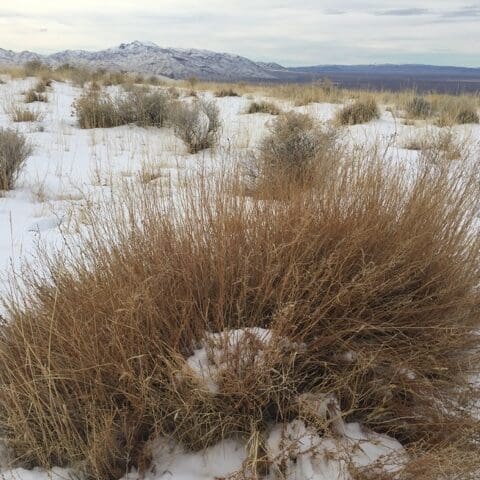The practice of dormant seeding pastures and lawn grass is a tried and true method for establishing plants. This planting method is also referred to as fall planting, dormant planting, or winter sowing.
What Is Dormant Seeding?
Dormant seeding is the practice of seeding late enough in the year that seeds sit over winter and germinates early the following spring. Melting snow soaks the seed and surrounding seed bed, warming temps stimulate it, and nourishing spring rains keep it growing and rooting.

When to dormant seed
The timing of dormant seeding is important. If done too early, some seed will germinate late in the season and those immature seedlings often won’t survive the winter. Sow your seed while the ground is not frozen, but cold enough that germination will not occur until the following spring. As a general rule, this is sometime from late October to mid-November depending on your location.
How to Dormant Seed
Other than the time of year for dormant seeding, the actual process of preparing the area to be seeded is virtually identical to establishing grass from seed at other times of the year.
Establish good seed-to-soil contact
Mow the existing plant matter down to about 2 inches. This will allow seed applied over the top to reach the soil. Loosen the soil surface so the seed can easily be incorporated into the surface quarter-inch or so of loose soil. Small areas of bare soil or even a thin turfgrass stand can easily be prepared using a hand rake. Larger areas can be prepared by ‘lightly’ going over the surface with a power rake or vertical mower available from most rental agencies. Set the blades or cutters just deep enough to penetrate into the top ¼ inch or so of soil. If you broadcast, rolling the surface after sowing is highly recommended – the process will “press” the seed into contact with the soil. If you are drilling, DO NOT BURY THE SEED. Seeds should be drilled NO DEEPER than .25″
Great Basin Seed products frequently sown in the fall include:
- Dryland, Irrigated and most Pasture Mixes
- Lawn & Turf Mixes
- Orchardgrass
- Turf and Forage Type Perennial Ryegrasses
- Turf and Forage Type Fescues
- Most native and introduced range grasses
- Immigrant Forage Kochia


Immigrant Forage Kochia
A classic example of a plant that performs best dormant planted is Immigrant Forage Kochia. The natural life cycle of this amazing plant sheds the seed in mid winter, and it is best sown in a way that replicates those conditions. The vast majority of Forage Kochia seedings are done in December, January and February, usually right on top of the snowmobiled. In fact, if Forage Kochia is sown any other time of the year, it will usually fail.
What to Expect in the Spring
The success your dormant seeding will depend on the winter conditions. The seed is best protected when snowfall is sufficient enough to cover and protect the area. You should see germinated seedlings by late April or early May in most years. An assessment can be made at this time if additional overseeding needs to be done.
If the newly seeded areas appear to be thin you shouldn’t feel your fall efforts were a failure. It is common to have to do a little additional “spot” reseeding in the spring. Allow enough time for the seeds to come up. Don’t be hasty to get in and start tearing things up; you just may be destroying all of the good work done the previous fall.
If you are certain the dormant seeding did not succeed, the area can always be overseeded the following spring. The light disturbance of the dormant seeded area during an overseeding process should not be a significant problem for the seedlings that have germinated. However, of the young seedlings that are germinating, it is important to not tear them out or destroy them by excessive traffic on the dormant seeded area. Consider fertilizing these areas in May to encourage establishment.